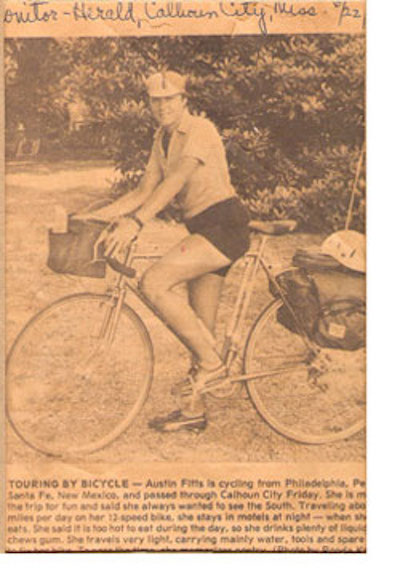
By Catherine Austin Fitts
I love bicycles. Given where the world is going, expect bicycles to provide more essential transportation in the future.
If you don’t own a bike, you may want to think about getting one. If you own a regular bike but don’t have an electric bike, you may also want to consider one of those – especially one with some capacity for cargo (check out these beauties) or overnight luggage. Or for those of you in urban areas with great bike-share services, just connect into them.
I am currently in the Netherlands, where there are approximately the same number of bicycles as there are people. The Netherlands has the highest bike usage of any country in the world. It is one of the reasons the Dutch are noticeably healthier than people in areas of the world with low bike usage. It is likely one of the reasons that the Dutch are also in a much better mood – more exercise and more oxygen will do that.

After graduating from business school, I rode a bicycle 3,000 miles across the United States from Philadelphia to Santa Fe. It was one of the most amazing trips of my life. So, when I recently ran across Lonely Planet’s 2019 book, Epic Bike Rides of the World, I had to get it. Of course, I loved it. The ride around Europe’s Lake Constance is on my to-do list. In the U.S., Americans are in luck as there are many rides one can do in all 50 states, despite all the current Reset restrictions.

After a lifetime of riding bicycles, I decided it was also time to learn their history. Since I love pictures, I got The Bicycle Book: The Definitive Visual History from DK Publishers (in the U.S., the title is pared down to Bicycle: The Definitive Visual History). The book’s editorial staff included a team from India – a country that puts the bicycle to work in great ways. Asia is clearly in the lead for explosive bicycle travel. The Bicycle Book looks like a beautiful coffee table book and is a fascinating approach to learning the history of the bicycle, which in the scheme of things, a relatively new invention. The book states:
But how many people realize that the balance bike is actually 200 years old? First built for adults in 1817, and called a draisine, after its inventor, or Laufmaschine (running machine), it was seen as a potential replacement for the horse in times of climate change after the eruption of Mount Tamboora led to the so called “Year without a Summer” and a shortage of animal feed.
Who knew? The Bicycle Book is full of fascinating insights about the bicycle’s past and present, with eye-candy quality pictures. I would think this one would be good for homeschoolers, and especially families with young makers, tinkerers, and inventors.

While I was on my bicycle book spree, I also read Fifty Bicycles That Changed the World from Design Museum, which offers a quicker way to review some of the most popular or significant designs in the evolution of bicycles.
After finishing all three books, I went to the website for Taiwan bicycle manufacturing juggernaut Giant to see if its stock was traded. Alas, it is only available on the Taiwan exchange. I intend to add it to my Solari World screen list if it ever lists to trade in the U.S.
I predict a great future for the bicycle, in all of its many variations and forms, from sports to travel to commuter and errand workhorse. If you homeschool, add bicycle mechanics to your children’s curriculum. If you are in a Solari Circle, arranging some group lessons in bicycle mechanics and care is an idea worth adding to your list. This is useful knowledge for the road ahead.
Read the Books:
Bicycle: The Definitive Visual History
Fifty Bicycles That Changed the World
Babboe: Awesome bikes for people with kids, animals and cargo
